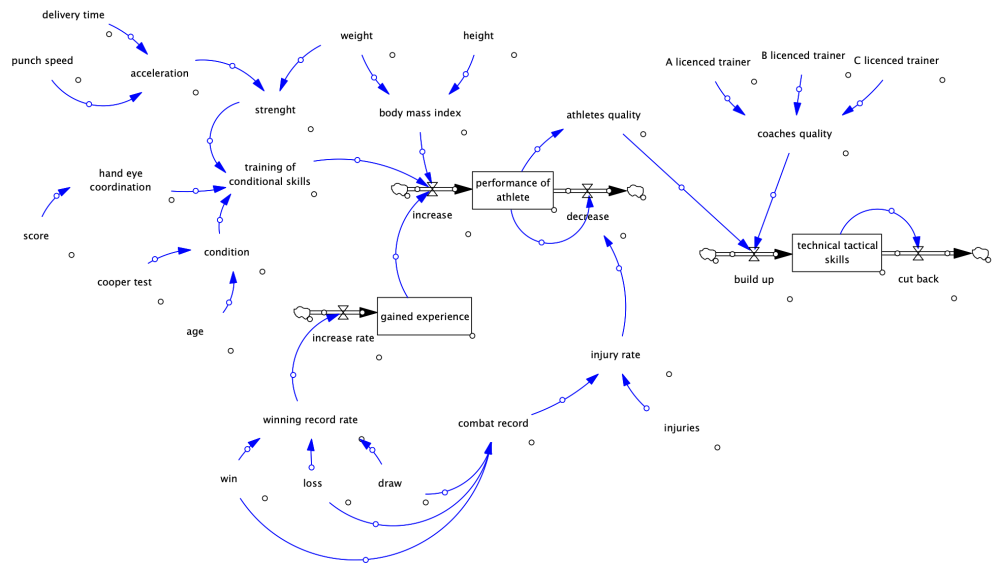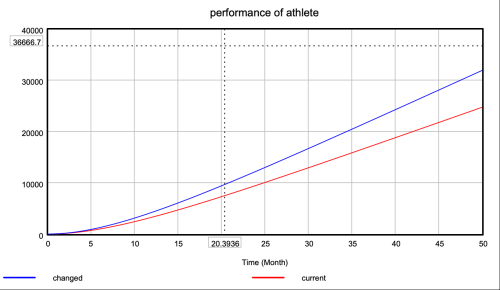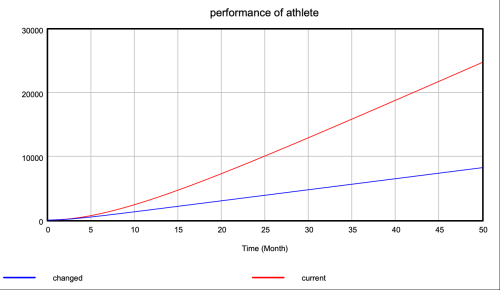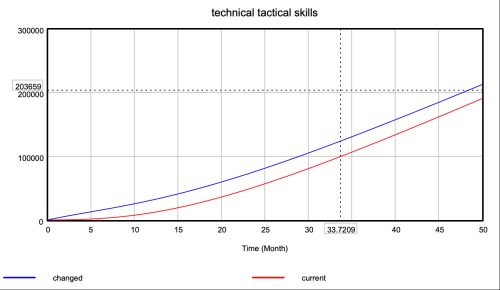Boxing athlete
Introduction In sports, it is of great importance to create an individual training plan for each athlete. For example, the goals and training plans are defined for a year, quarter, months or for the immediate competition preparation. For this purpose, it must be specified exactly on which days which training units are to be performed. For the trainers, however, this is not an easy task to recognize in advance which exercises are necessary to improve performance. It is the experience and the gut feeling that are decisive for this. At the moment, unfortunately, the reasons for the successes and failures are often analyzed only after the boxing matches.
Contents
Problem definition
In almost all sports, an individual training plan is crucial to an athlete's success. The same is the case in boxing, where it is difficult to work out an athlete's strengths and weaknesses and plan the right training based on them. Often, it is unclear what impact the various conditioning skills have on a boxer's performance. However, it is of great advantage to test this in a simulation in order to be able to determine the training sessions. By this way, it should be possible to specify the current performance parameters for each individual athlete in advance and to simulate the effects on his performance by changing this parameters.
Method
In order to analyze the performance of a boxer, a model was created in VensimPLE, which can be filled with individual parameters to run a simulation. The effects of the conditional skills as well as the injury rate on the overall performance are given accordingly in equations. The thresholds and weights have been determined based on existing research on sports studies.
Model
The stack and flow model represents the conditional and technical/tactical abilities of a boxer based on various performance parameters. The athlete's performance is dependent on the conditional skills and the gained competition experience. The injury rate leads to a loss of performance. The quality of the athlete together with the quality of the coaches determine the level of competitive performance, which includes technical and tactical skills.
Equations derived from studies that require explanation
These are the equation derived from the tables for the assessment of BMI for adults, which is in the normal range with a value between 19 and 25. The output is set according to the relevance for boxing with a weighting of 10%. https://www.smart-rechner.de/bmi_erw/rechner.php Managerboxen : gesundes Kampfsporttraining in der Praxis / Jürgen Fritzsche, Christoph Raschka
= IF THEN ELSE( (weight/(height*height)) < 25 :AND: (weight/(height*height)) > 19 , 0.1*strenght , -0.1*strenght)
Here Newton's second law is used by calculating the force of the boxer's punch (strenght) through multiplying the mass, i.e. the weight of the boxer, by the acceleration of the punch (F =m x a). To convert Newtons to kilogram force (kgf), the constant number 0.10197 is also multiplied. The acceleration is calculated by dividing the punch speed by the delivery time.
https://www.omnicalculator.com/sports/human-punch-force
https://en.wikipedia.org/wiki/Kilogram-force
= weight*acceleration*0.10197 = punch speed/delivery time
the athlete's hand-eye coordination is determined by a coordination test in which the number of tennis balls thrown and caught against the wall is counted as a score. Scores upwards of 20 have a positive influence while anything below that is weighted negatively by 0.5.
https://testsforsports.com/other/coordination-test
= IF THEN ELSE( score > 20 , 0.5*score , -0.5*score )
The Cooper test is used to evaluate the athlete's endurance. Depending on the age, different evaluations are to be made.
https://de.wikipedia.org/wiki/Cooper-Test
= IF THEN ELSE( cooper test > 2200 :AND: age > 16 :AND: age < 29 , 0.1*cooper test , -0.1*cooper test) + IF THEN ELSE( cooper test > 1900 :AND: age > 29 , 0.1*cooper test , -0.1*cooper test)
The winning record rate is calculated by dividing the number of wins by the total number of matches, where a draw is worth the same as a 1/2 win. https://www.omnicalculator.com/sports/winning-percentage
= (win+(0.5*draw))/(draw+loss+win)
Obviously, the injury rate results in injuries by number of fights. In reality, the number of injuries is hardly counted, so it is also recommended here to take average values from studies. This is for women 8.9 and for men 13.3 per year. The performance of a boxer is reduced by the injury rate.
https://activesafe.ca/boxing-and-kickboxing/
Clinical journal of sport medicine: official journal of the Canadian Academy of Sport Medicine / Tsharni R Zazryn, Paul R McCrory, Peter A Cameron
= injuries/combat record
In addition to the conditional performance, the qualification and number of coaches has an influence on the technical and tactical training of the boxer. The highest license that a boxing coach can get is the A license, which is also weighted higher than the B and C license. https://www.boxverband.de
= (A licenced trainer*1000)+(B licenced trainer*500)+(C licenced trainer*250)
Results
Here are some sample results that show how changes in individual performance indicators can affect the athlete's overall performance. The graph represents the athlete's performance once with the athlete's current values (red) and once with improved stroke speed and hand-eye coordination (blue).
This figure is intended to show an increase in injury rate can have a strong negative impact on the athlete's performance.
This diagram shows how increasing the number of trainers can positively influence the boxer's technical and tactical skills.
Conclusion
The simulation can be very helpful in analyzing the performance of an athlete with the respective performance indicators. Various dependencies between the individual skills of the athlete can be revealed individually. With these results, the training plans can be designed more precisely for the respective boxer. Weaknesses and strengths of the athlete can be tested with different parameter values and allow an early prognosis.



